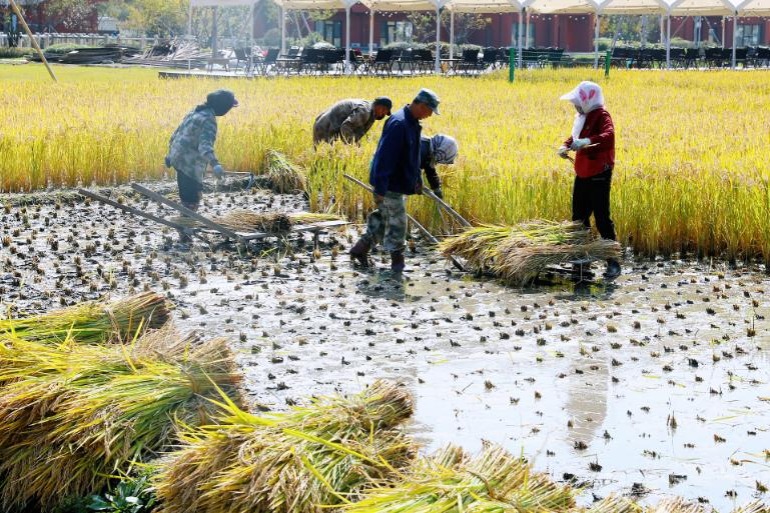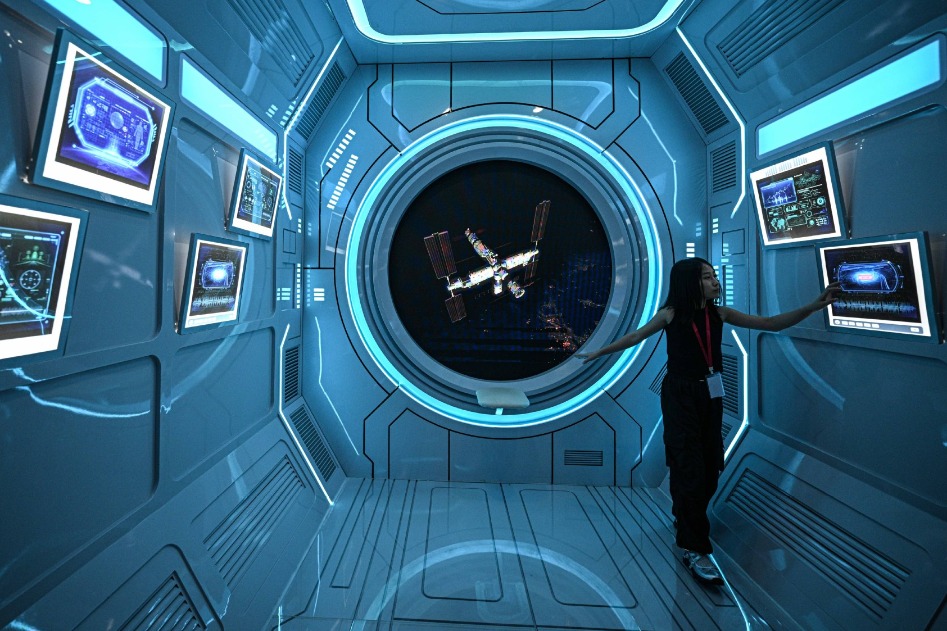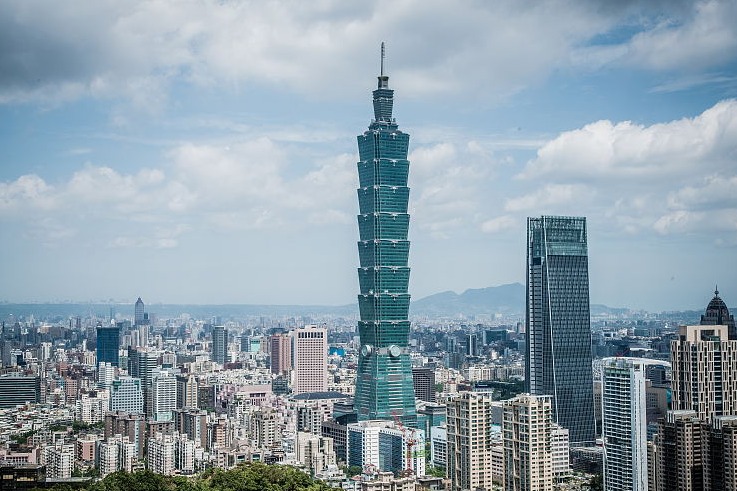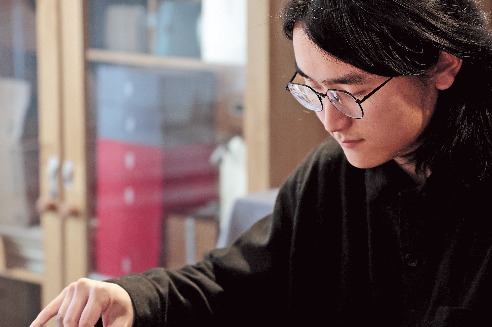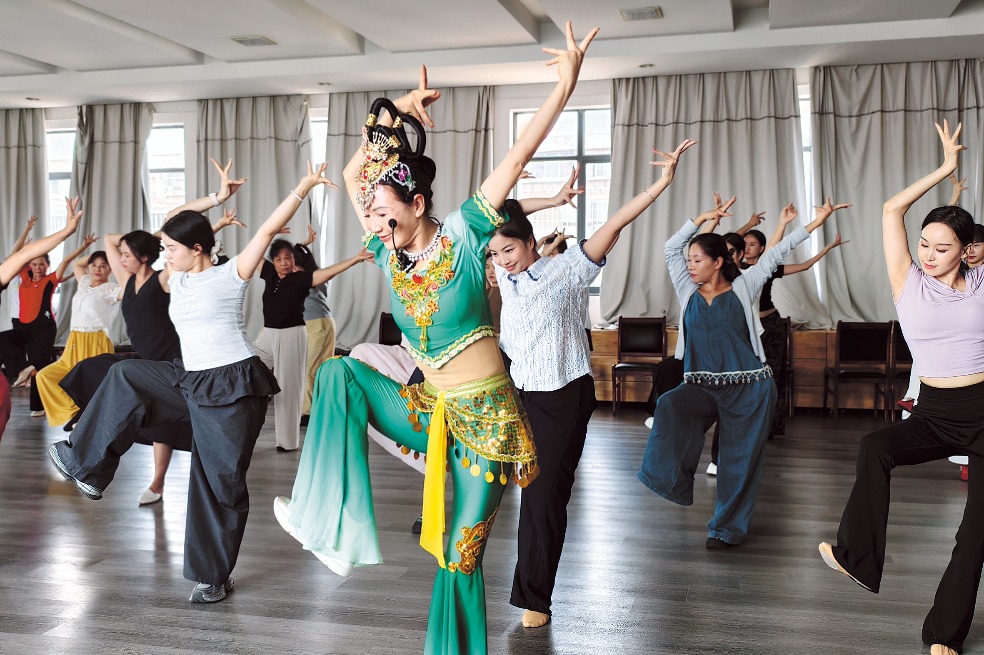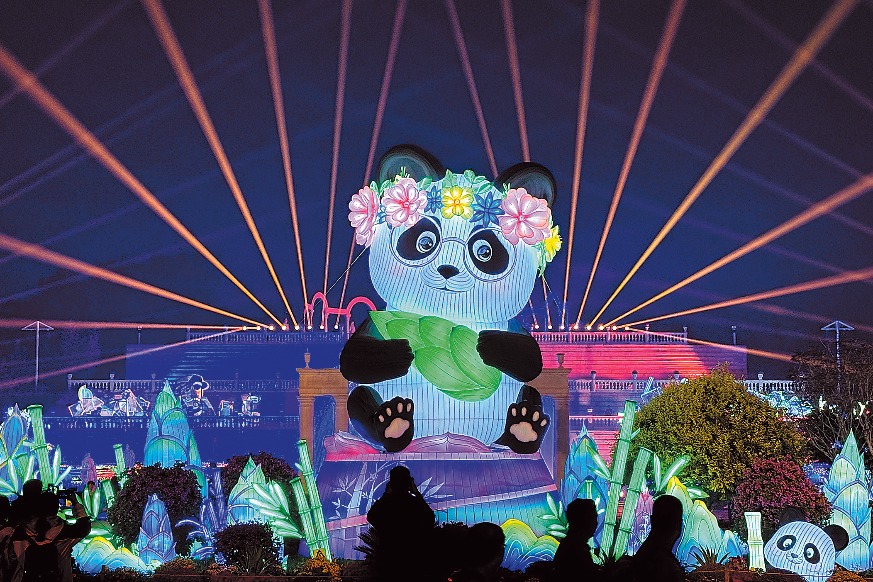Lab monkeys in dire shortage amid virus


In February 2020, as the spread of COVID-19 accelerated at home and abroad, scientists were anxiously awaiting the answer to a critical question that would change the course of the pandemic: Did Qin Chuan's monkeys have a fever?
Qin, director of the Chinese Academy of Medical Sciences' Institute of Laboratory Animal Sciences, was tasked with creating animal models that would provide measurable readouts for the transmissibility and pathogenicity of SARS-CoV-2, as well as for assessing and advancing the selection of vaccines and therapeutic agents.
Her work is considered the bedrock of all other COVID related research, so much so that Chinese authorities listed it as one of the five key scientific objectives in fighting the pandemic, along with the development of treatment and vaccines.
"Animal models are patients created in the lab environment. They can be used to study many questions in which human subjects are not suitable, such as how the virus is transmitting and infects hosts," she said. "All vaccines and drugs must also be tested in these animal models before going into clinical trials."
Qin's models consisted of mice that have had their genome modified so that they produce a human version of a protein called ACE2, which is the receptor through which the novel coronavirus binds and enters cells. Rhesus macaques that have COVID-19 infections in their respiratory and gastrointestinal tracts are also used. They help scientists study the effect of the virus on the organs and immune system of one of the closest relatives to humans outside of the great apes.
These models also proved that COVID-19 could be transmitted via respiratory droplets, close contact and aerosol particles, which were valuable insights for prevention and control efforts, she said.
The animal models project began in early January of last year, with the mice model completed on Jan 29 and the monkey model on Feb 14. After appraisal, the Ministry of Science and Technology announced on Feb 18 that China had created the world's first animal models for studying COVID-19.
On Feb 28, Qin presented her findings at an international online panel of animal model experts organized by the World Health Organization. Liu Jiangning, Qin's colleague and the deputy director at the institute, said most foreign experts at the meeting were still discussing model design, and were surprised to find out that China had already finished it.
"There was about three seconds of silence after Qin finished her presentation, then someone called it 'unbelievable work'," Liu told China Youth Daily.
The findings from Qin's animal models were subsequently published in the journals Nature and Science. But creating the models was merely the first step. Qin and her team have since toiled day and night, assessing nearly 50 vaccines and over 130 therapeutic agents against COVID-19 using the lab animals.
"The speed of developing the animal models will dictate how fast vaccine and drug candidates can be made, and the quality, variety and quantity of the models will decide how accurate the evaluation results are for these candidates, and how many of them can enter clinical trials," she said.
The workload was so grueling that in the "makeshift research command center" at Qin's institute, there were bottles of heart medication on the table at the center of room in case anyone experienced a heart problem.
Every now and then, Qin would visit the "soul solace stone" at the back of the institute. The stone is to commemorate all the animals who died to help researchers overcome scientific challenges.
"Every time I encounter a difficult problem, I would come here and collect my thoughts," she said. "We can't forget these heroes behind the scenes."
Troubling shortage
One of the biggest challenges for Qin, especially during the early days of the pandemic, has been the shortage of macaques bred for animal testing. As research on COVID-19 vaccines and drugs intensifies around the world, the scarcity and rising costs have been affecting biomedical research worldwide.
Ren Jin, a researcher at the Chinese Academy of Sciences' Shanghai Institute of Materia Medica, said on the sidelines of Shanghai's annual sessions of its municipal legislature and municipal political advisory body in January that the average price of a lab monkey soared to 62,000 yuan ($9,562) in January from around 15,000 yuan in the latter half of 2019. "It is increasingly difficult to get quality macaque specimens," she added.
To address the issue, the Ministry of Science and Technology established an animal model task force dedicated to allocating lab monkeys and other test animals among research groups. The task force is supported by the National Forestry and Grassland Administration and air transportation authorities, ensuring scientists get swift access to the animals.
Shen Weiguo, general manager of Shanghai Technology Venture Capital Group Co, said around 6,000 laboratory monkeys were used in the research and development of vaccines and medicines for COVID-19 last year.
But three large biomedical companies in Shanghai said they were still short of 2,750 research monkeys last year, and the number is expected to grow by 15 percent annually in the next five years, Shen said.
The shortage on the international scene is more pronounced, prompting some Western media, especially those from the United States, to blame the situation on China banning the import and export of wild animals last January as the country moved to contain the spread of COVID-19.
China had been a major exporter of monkeys for biomedical research worldwide, and was estimated to have supplied over 60 percent of the 33,818 primates, mostly crab-eating macaques, imported by the US in 2019, according to the US Centers for Disease Control and Prevention.
However, Chinese experts said placing the blame on recent regulations is unwarranted because the shortage of lab monkeys has been a well-documented issue in China due to the country's life science research accelerating in recent years, prompting a rising demand for lab monkeys.
Zhao Shengli, secretary of the China Laboratory Primate Breeding and Development Association, told China Newsweek that lab monkeys need to have detailed health and genetic records, and it would take at least eight years for a baby monkey to mature, go through testing and be ready for lab use.
"Lab monkeys are a valuable animal resource. They are not like factory products that can be immediately produced once an order is placed," he said. "This is one of the reasons there is a shortage of lab monkeys, and the situation probably will continue for the next three to five years."
According to the association, by the end of 2018, China had 211,171 crab-eating monkeys and 28,806 rhesus macaques for lab use in total. Around 100,000 of these lab monkeys are still growing, of which only 30,000 are readily available for Chinese researchers after removing those that are either too young, too old, or have already been ordered by foreign entities.
While dogs, pigs and rodents are also commonly used lab animals, primates, with genetics and biological systems similar to humans, are highly preferred for toxicity, neurological and behavioral studies, especially for testing some types of antibody treatments and biological products, according to the National Experiment Animal Data Resource Center.
The center said China's biomedical sector was estimated to have used around 28,000 lab monkeys in 2019, a 54.5 percent increase from 2017. Most of the monkeys used are crab-eating macaques, but this species is not native to China and must be imported from Southeast Asia, which further complicates the breeding process and reduces supply.
China has dozens of primate breeding companies, but most of these are small, private operations that lack rigorous long-term and scientific management, the center said. Therefore, aging monkeys have become a serious issue at those companies, leading to low fertility rates and poor health among the offspring.
Moreover, only a handful of companies in China can breed the highly sought-after specific pathogen-free rhesus monkeys. Imported monkeys from Southeast Asia often carry pathogens including tuberculosis, and must be quarantined and treated for long periods.
As a result, a quality lab monkey supply is very difficult to scale up and the shortage will likely continue in the foreseeable future, the center said, adding that more investment, better management at breeding sites and proper treatment of lab animals are key for remedying the situation.
For years, scientists have been searching for replacements for breeding lab monkeys, including developing culture chips that simulate human organ tissue and cloning of gene-edited monkeys.
- China-Laos Railway handles over 60 million passenger trips
- Bangladesh's young boy recovering after undergoing specialized surgery in Hubei
- Shanghai pioneers music therapy committee to advance mental health care
- No casualties reported after 5.4-magnitude quake in China's Sichuan
- Village in Guangzhou announces subsidy for patients with mosquito-borne diseases
- Guangdong railways set passenger record during National Day holiday

















